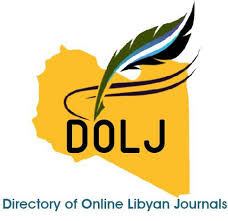Exploring the Impact of Chronic Diseases and Health Spending on the Libyan Economy: An ARDL Analysis
DOI:
https://doi.org/10.54361/LJMR.19.2.09Keywords:
Chronic diseases, Health expenditure, Political instability, ARDL, Inflation, Economic growth, LibyaAbstract
Purpose: This study explores the intricate relationship between chronic diseases, government health expenditure, political instability, inflation, and economic growth in Libya from 1990 to 2022. It aims to understand the short- and long-term effects of these variables on economic performance. Materials and Methods: Utilizing an Autoregressive Distributed Lag (ARDL) model, annual data were analysed to understand both short- and long-term impacts. Results: Findings demonstrate that government health expenditure significantly contributes to economic growth, while the increasing prevalence of chronic diseases, such as cardiovascular conditions and diabetes, poses economic burdens through reduced productivity and heightened healthcare costs. Political instability and inflation are identified as major negative influences on growth, with cumulative reductions of 3.97% and 1.46%, respectively. Conclusion: The study underscores the importance of targeted health interventions and chronic disease prevention programs to mitigate economic strain. Policy recommendations emphasize investment in healthcare infrastructure, strategic management of chronic diseases, monetary policy reforms, and institutional stability to support sustainable development.
Downloads
References
1. Bloom DE, Cafiero ET, Jané-Llopis E, Abrahams-Gessel S, Bloom LR, Fathima S, et al. The global economic burden of noncommunicable diseases. Geneva: World Economic Forum; 2011.
2. Abegunde DO, Mathers CD, Adam T, Ortegon M, Strong K. The burden and costs of chronic diseases in low-income and middle-income countries. Lancet. 2007;370(9603):1929-38.
3. World Bank. Development Report for the Middle East and North Africa. Washington, DC: World Bank; 2022.
4. Al-Otaibi H. Government Spending on the Health Sector and Its Impact on Economic Growth in the Kingdom of Saudi Arabia (2000-2020). Arab Journal for Scientific Publishing. 2024;66(7):260-73. [In Arabic].
5. Wang KM. Health care expenditure and economic growth: Quantile panel-type analysis. Econ Model. 2011;28(4):1536-49.
6. Schultz TW. Investment in human capital. Am Econ Rev. 1961;51(1):1-17.
7. Suhrcke M, Nugent RA, Stuckler D, Rocco L. Chronic disease: An economic perspective. London: Oxford Health Alliance; 2006.
8. Aisen A, Veiga FJ. Political instability and economic growth. Eur J Polit Econ. 2013;29:151-67.
9. Elboiashi H. The Impact of Political Stability on Economic Growth in Libya. Int J Econ Stud. 2024;28(6):171-85.
10. Barro RJ. Economic growth in a cross section of countries. Q J Econ. 1991;106(2):407-43.
11. Aboubacar B, Xu D. The impact of health expenditure on the economic growth in Sub-Saharan Africa. Theor Econ Lett. 2017;7(3):615-22.
12. Ozyilmaz A, Bayraktar Y, Isik E, Toprak M, Er MB, Besel F, et al. The relationship between health expenditures and economic growth in EU countries: Empirical evidence using panel Fourier Toda-Yamamoto causality test and regression models. Int J Environ Res Public Health. 2022;19(22):15091.
13. Esen E, Keçili MÇ. Economic growth and health expenditure analysis for Turkey: Evidence from time series. J Knowl Econ. 2022;13:1786-800.
14. Bouhama K. The Impact of Health Expenditure on Economic Growth in North African Countries: An Empirical Study Using Panel Data During the Period (2000-2018). Journal of the Institute of Economic Sciences. 2021;24(2):465-82. [In Arabic].
15. Nasrat A, Mahran H, Al-Saeed S, Al-Sharbin I. The Interrelationship Between Public Health Expenditure and Economic Growth in Libya: An Empirical Study. Faculty of Commerce - University of Damietta. 2024;5(1):67-87. [In Arabic].
16. Al-Houta AA. Determinants of Inflation in the Libyan Economy. Studies in Economics and Trade. 2021;40(1). [In Arabic].
17. Al-Kilani S. The Impact of Political Instability on the Libyan Economy - During the Period (2011 – 2020). Journal of Economic and Business Studies. 2024;11(1). [In Arabic].
18. Pesaran MH, Shin Y, Smith RJ. Bounds testing approaches to the analysis of level relationships. J Appl Econom. 2001;16(3):289-326.
19. Elboiashi H, Embaya AM. Economic corruption and its impact on achieving the Sustainable Development Goals (SDGs) in Libya. Int J Financ Adm Econ Sci. 2025;4(2):248-66.
Downloads
Published
Issue
Section
License
Copyright (c) 2025 Hosein A. Elboiashi, Hatem A. Khpiza (Author)

This work is licensed under a Creative Commons Attribution-NonCommercial-NoDerivatives 4.0 International License.
Open Access Policy
Libyan journal of medical Research (LJMR).is an open journal, therefore there are no fees required for downloading any publication from the journal website by authors, readers, and institution.
The journal applies the license of CC BY (a Creative Commons Attribution 4.0 International license). This license allows authors to keep ownership f the copyright of their papers. But this license permits any user to download , print out, extract, reuse, archive, and distribute the article, so long as appropriate credit is given to the authors and the source of the work.
The license ensures that the article will be available as widely as possible and that the article can be included in any scientific archive.
Editorial Policy
The publication of an article in a peer reviewed journal is an essential model for Libyan journal of medical Research (LJMR). It is necessary to agree upon standards of expected ethical behavior for all parties involved in the act of publishing: the author, the journal editorial, the peer reviewer and the publisher.
Any manuscript or substantial parts of it, submitted to the journal must not be under consideration by any other journal. In general, the manuscript should not have already been published in any journal or other citable form, although it may have been deposited on a preprint server. Authors are required to ensure that no material submitted as part of a manuscript infringes existing copyrights, or the rights of a third party.
Authorship Policy
The manuscript authorship should be limited to those who have made a significant contribution and intellectual input to the research submitted to the journal, including design, performance, interpretation of the reported study, and writing the manuscript. All those who have made significant contributions should be listed as co-authors.
Others who have participated in certain substantive aspects of the manuscript but without intellectual input should only be recognized in the acknowledgements section of the manuscript. Also, one of the authors should be selected as the corresponding author to communicate with the journal and approve the final version of the manuscript for publication in the LJMR.
Peer-review Policy
- All the manuscripts submitted to LJMR will be subjected to the double-blinded peer-review process;
- The manuscript will be reviewed by two suitable experts in the respective subject area.
- Reports of all the reviewers will be considered while deciding on acceptance/revision or rejection of a manuscript.
- Editor-In-Chief will make the final decision, based on the reviewer’s comments.
- Editor-In-Chief can ask one or more advisory board members for their suggestions upon a manuscript, before making the final decision.
- Associate editor and review editors provide administrative support to maintain the integrity of the peer-review process.
- In case, authors challenge the editor’s negative decision with suitable arguments, the manuscript can be sent to one more reviewer and the final decision will be made based upon his recommendations.











